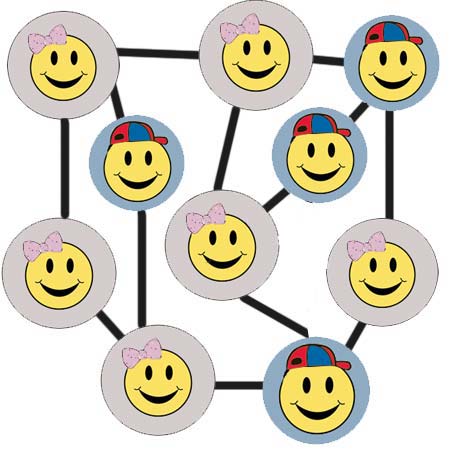A Review of: Taken Out of Context
She’s being called the rockstar of social network sites and has done some extensive research on the subject. The American academic Danah Boyd has now completed her PhD dissertation, “Taken Out of Context: American Teen Sociality in Networked Publics”, in which she examines the phenomenon. In her dissertation she takes a closer look at how American teens use social network sites like Facebook and MySpace to socialize.

Because Boyd herself belonged to the ‘early cohort of geeky kids who found freedom and agency through online interactions’, she could do her research from an unique point of view. The Internet shaped her teen years so she was well positioned to watch the phenomenon of teen engagement with social network sites, or networked publics as Boyd calls to them, unfold. She approached the project as an ethnographic study so she could make sense of cultural practices in the context of everyday life. During her 2,5 year study she looked at countless Facebook and MySpace pages and talked to almost a hundred children who use social network sites. This immense collection of both online and offline data gave her the opportunity to give us a refreshing insight in the way teens behave on social network sites.
I say refreshing because one of the main qualities of the dissertation is that Danah counters the myths that adults have about youth practices. She doesn’t see teens as imperfect adults that have to be protected from all the evils on the internet. She treats kids as any other marginalized group and is sincerely interested in what drives them. A lot of adults think that teens use social network sites for the same reasons they do: meeting new people. With the media constantly warning for online paedophiles, they see a potential danger in this. However, Boyd notes that teens aren’t really interested in meeting new people but mainly in socializing with their peers.
The dissertation takes a look at three sets of relations that play a dominant role in teen life: the relation teens have with themselves, with their friends and with their parents and other adults. She examined how social network sites reshaped these relations. When socializing on a social network site teens have to deal with certain dynamics that complicate their social practices. They have to take in account that the viewers of their personal page are invisible. Not only can their friends see their pages but the whole world can. Teens don’t really know who their writing for or what kind of impression they’re making on different people.
Furthermore, the context in which certain things are written is collapsing. For example, conversations on Facebook or MySpace are often a continuation of conversations they had in the offline world. The invisible audience doesn’t know this context and can misinterpret the content. Alongside this there is the blurring of public and private. The private life of teens finds it’s way into the public where it can be seen by almost everyone. These things can lead to a lot of drama in the life of teens. A Dutch example of this can be found on the infamous shocklog GeenStijl. They published the Hyves (a popular Dutch social network site) profile of the 14-year old daughter of the Dutch secretary for youth and family on which she called one of her teachers something nasty. I’m sure father and daughter had a serious heart-to-heart after this publication.
Still, Boyd doesn’t see these complications as harmful to teens or as a disqualification of social network sites. She notes that teens have always sought spaces where they could socialize without parental control and that adults have always attempted to limit the access and privacy of their offspring. Fuelled by the media frenzy and moral panic about the online dangers parents try to reassert control over their teens. This is nothing new and teens continue to find ways of meeting their needs despite the restrictions they face. But Boyd is disappointed that many of these adults don’t see the potential value of participation in these spaces. She sees social network sites as a valuable space for learning about social situations and making sense of the world around them.
In her research Boyd focuses on American teens. It could be interesting to examine how social practices by teens differ in other countries. I believe for example that parental control in The Netherlands is way less strict than in the US. This complicates Boyd’s claim that if given the chose teens would prefer physical spaces to socialize over the online environment. Hyves is tremendously popular among teens in the Netherlands, even though most of them are not really restricted in their social practices. It seems social network sites have some additional advantages over real life interaction on which Boyd doesn’t elaborate. She says that the appeal is not the technology but I beg to differ.
In her conclusion Boyd uses a quote from the nineteenth-century French critic Jean-Baptiste-Alphonse Karr, ‘Plus ça change, plus c’est la meme chose. (The more things change, the more they are the same.)’ Social network sites are reshaping the social interaction between teenagers but also reveal a continuation of earlier practices. As someone who grew up with social network sites “Taken Out of Context” didn’t give me many revolutionary new insights in the ways teens adopt the new media. I do, however, believe that this dissertation is valuable piece of work which can be the starting point in refuting some of the myths that surround social network sites. With her research she has given teens a voice. Now let’s hope the adults will listen.